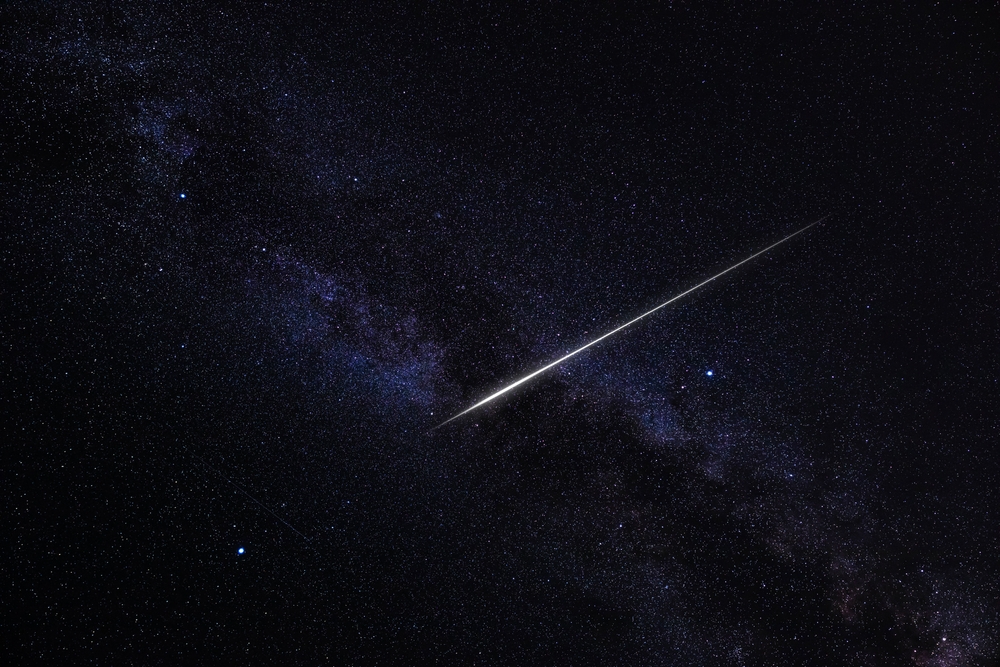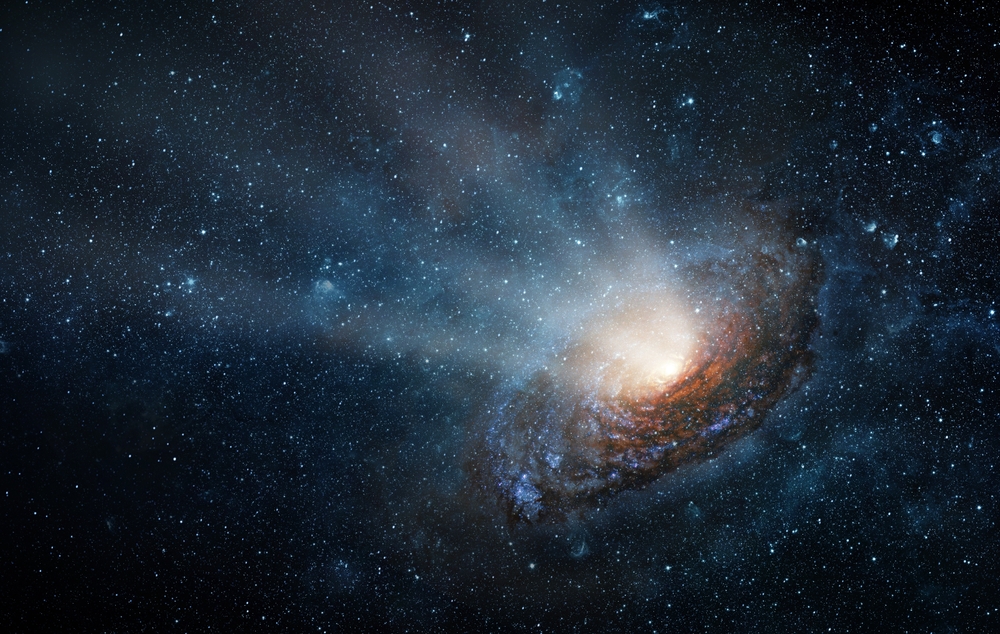A Star Racing 2 Million Miles an Hour Just Cracked the Milky Way’s Skeleton

At the heart of our galaxy, far beyond the reach of our telescopes’ naked sight, lies a place of profound beauty and mystery. There, magnetic fields twist and hum like silent music, and charged particles dance along invisible lines of force. In that cosmic cathedral, astronomers have found something that looks almost biological — a structure they call “The Snake.” It stretches for more than 230 light-years, a colossal filament of energy and dust so intricate that it resembles the X-ray of a bone inside the body of the Milky Way.
Recently, something astonishing happened. Scientists using NASA’s Chandra X-ray Observatory and the MeerKAT radio telescope in South Africa discovered that this galactic “bone” bears a fracture — a real disruption in its form, as if the universe itself had suffered a sudden impact. The source of that break appears to be one of the most extreme objects known to science: a neutron star, the compressed heart of a once-massive sun that exploded long ago. This tiny but mighty remnant, traveling through space at over two million miles per hour, slammed into The Snake with such power that it bent its magnetic field and twisted its structure. What we see now, across the gulf of 26,000 light-years, is the mark of that collision — a bruise of light, a scar of motion written across the Milky Way’s hidden skeleton.

The Snake in the Stars — G359.13 and the Milky Way’s Hidden Skeleton
G359.13, or “The Snake,” is one of the most spectacular examples of what astronomers call Galactic Center Filaments. These are vast, thread-like formations near the center of our galaxy, illuminated by charged particles moving along strong magnetic fields. To human eyes, they appear only through the language of radio waves and X-rays, captured by the sensitive instruments that can translate invisible frequencies into color and form. When Chandra and MeerKAT combined their data, they revealed a sight that almost feels surreal: a luminous strand suspended in the darkness, shining like the backbone of the cosmos itself.
The Snake is immense — roughly 230 light-years from end to end — and yet so delicate that it appears almost transparent in the images. The MeerKAT array rendered it in smoky greys, while Chandra’s data added sharp specks of blue, representing high-energy X-rays emitted by particles accelerated to near light speed. It’s these details that make the structure so hauntingly beautiful. It reminds us that the Milky Way, which seems to us like a smooth band of light across the night sky, is actually a web of energy and matter, stretching and pulsing with motion. These filaments are more than visual wonders; they are clues to the galaxy’s magnetic heart, mapping the unseen framework that holds the core of the Milky Way together.
Scientists have long wondered how these filaments form and why they align the way they do. Some theories suggest that they trace magnetic field lines connected to the supermassive black hole at our galaxy’s center. Others think they arise where shockwaves from exploding stars meet dense clouds of gas. The discovery of The Snake’s fracture now adds a new piece to this puzzle: even structures that seem eternal can be altered by a single, fast-moving object. The galaxy, it turns out, is not a still picture but a living organism, constantly flexing, stretching, and changing its form.

The Cosmic Bullet — A Neutron Star’s Furious Journey
The object responsible for this fracture is one of the most remarkable entities in all of astrophysics: a neutron star. When a star many times the size of our Sun reaches the end of its life, it detonates in a titanic explosion called a supernova. What remains after that fiery death is a sphere barely twenty kilometers across but unimaginably dense. A single teaspoon of neutron star material would weigh about a billion tons on Earth. It is matter crushed beyond comprehension, atoms collapsed into a sea of neutrons so tightly packed that time and gravity bend around them.
These remnants are sometimes kicked into motion by the force of their own birth. When a supernova explodes unevenly, it can fling its leftover core through space like a cannonball. The result is a neutron star traveling at insane speeds — sometimes faster than two million miles per hour. Some of these spinning remnants, known as pulsars, emit rhythmic beams of radiation as they rotate, flashing like cosmic lighthouses in the void. The pulsar discovered near The Snake’s fracture fits this description perfectly. To NASA’s instruments, it appeared as a bright X-ray source exactly where the filament seemed broken, as if it had carved a path right through the magnetic structure.
Think about that: a collapsed star, once a sun like ours, now transformed into a dense, spinning fragment of pure energy, racing through the galaxy with unstoppable force. It is the very embodiment of change — destruction becoming motion, death becoming momentum. In its journey, it collided with something vast and ancient, and in that collision, it left behind beauty. The universe, it seems, never wastes an act of violence. Even its most violent motions create art.

The Moment of Impact — When Force Meets Fragility
Through Chandra’s sharp X-ray vision and MeerKAT’s wide radio lens, astronomers pieced together the story of that moment. The pulsar struck The Snake where its magnetic lines were most concentrated, warping the radio emissions and creating a visible kink in the filament’s smooth structure. The interaction released a burst of energy that twisted and heated nearby particles, lighting them up in a pattern that matched the pulsar’s motion. It was, in every sense, a galactic collision — though not one of destruction, but of transformation.
For scientists, this finding deepens our understanding of how energy flows through the Milky Way’s core. The pulsar’s impact reveals that these filaments are not passive threads but dynamic structures capable of responding to external forces. They bend, they realign, and they carry the echoes of what touches them. Each filament is a living archive of cosmic events, storing traces of movement and magnetism across tens of thousands of years.
There’s something profoundly human in that idea. We too are shaped by collisions — by encounters that strike us when we least expect them. Sometimes they shatter our plans, bend our paths, or leave us marked in ways we can’t immediately understand. But like The Snake, we are not destroyed by contact. We are defined by it. Every fracture in our story is evidence of a moment when something powerful passed through — a lesson, a love, a loss, an awakening. Our personal magnetic fields shift, but they do not vanish. They evolve.

Reading the Universe’s Diary
For astronomers, the fractured Snake is more than a curiosity; it’s a key to unlocking how magnetic energy behaves near the galactic center. These filaments act as cosmic diaries, recording the interactions of stars, black holes, and particles over eons. Each ripple and distortion marks a page in that vast chronicle. The pulsar’s impact may help explain how such filaments form, why they glow so brightly, and how they persist in the turbulent environment surrounding the Milky Way’s core. The findings add a new layer to our picture of a galaxy that is far from static — one that’s alive with energy, constantly reshaping itself through motion and interaction.
Astrophysicist Farhad Yusef-Zadeh of Northwestern University, whose team led the discovery, describes these filaments as “fossils of magnetic activity.” They are, in a sense, the preserved handwriting of the galaxy’s history, each line a record of an energetic event that occurred long before humanity existed. To study them is to look back in time, reading messages written in particles and light. When we trace these structures, we aren’t just mapping the Milky Way; we are peering into the forces that make existence itself possible.
And that’s the true poetry of science. The universe, vast and indifferent as it may seem, tells stories that mirror our own. It breaks and heals, collides and continues. Its patterns of motion are not so different from the patterns of our emotions and experiences. Every person, like every galaxy, is filled with invisible filaments — threads of memory, energy, and connection. When life fractures one of them, it doesn’t end the story. It simply reveals a new chapter waiting to be read.

The Power That Breaks and Builds
The image of a neutron star colliding with a galactic bone is more than a scientific marvel. It’s a cosmic metaphor for the paradox of strength and vulnerability. The Snake’s fracture isn’t a failure of structure; it’s a testament to motion. The same force that broke it also illuminated it, making it visible across thousands of light-years. That’s what resilience looks like — not the absence of breaking, but the ability to turn impact into radiance.
In our own lives, we often fear the moments that break us. We try to avoid pain, change, and uncertainty. But maybe, like the galaxy, we are meant to be shaped by motion. The things that challenge us, that tear through our comfort zones, are also the things that reveal who we really are. Every time we collide with difficulty, we generate a little light. Every fracture in our hearts or our paths carries a trace of the energy that created it.
The Milky Way’s broken bone is a message across the stars: motion is life, and even scars can shine. The neutron star didn’t destroy The Snake; it awakened it, revealing its inner design in brilliant detail. When we move forward, even through chaos, we do the same. We transform the shock of impact into a story of growth, proof that we were here, that we mattered, that something powerful once passed through. In the silence between galaxies and the stillness of our own hearts, that truth hums on the same frequency — the frequency of becoming.
Loading...

